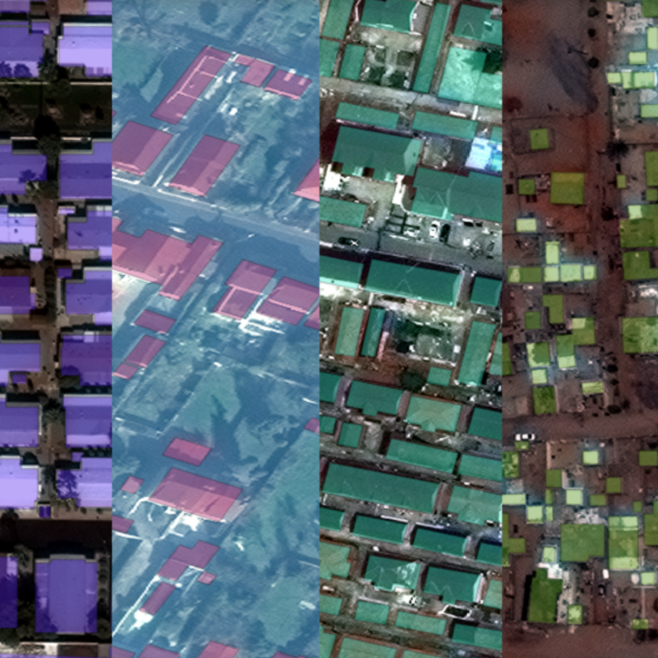
Whereas a typical approach, until recently, hinged on various combinations of spectral–spatial analysis and image processing techniques, in more recent times, the role of machine learning has undergone a progressive expansion. This difficult problem has been tackled in many different ways since multispectral satellite data at a sufficient spatial resolution started making its appearance on the public scene at the turn of the century. The problem of detecting building footprints in optical, multispectral satellite data is not easy to solve in a general way due to the extreme variability of material, shape, spatial, and spectral patterns that may come with disparate environmental conditions and construction practices rooted in different places across the globe. Further details of this challenge will be provided in the weeks ahead.Building footprint detection and outlining from satellite imagery represents a very useful tool in many types of applications, ranging from population mapping to the monitoring of illegal development, from urban expansion monitoring to organizing prompter and more effective rescuer response in the case of catastrophic events. Developers will be challenged to improve performance from the first competition using the higher-resolution imagery and more geographically diverse training data samples. The next phase of the SpaceNet Challenge will be a follow-on competition utilizing DigitalGlobe’s highest-resolution 30 cm imagery from WorldView-3 and building footprints across new locations around the globe. More information is available on CosmiQ Works’ blog, The DownLinQ. Increasing the diversity of geospatial data available in SpaceNet will enable machine learning to be applied to a wider range of use cases and applications. The Rio geodatabase contains 12 datasets with 35 unique layers containing more than 120,000 individual points of interest. National Geospatial-Intelligence Agency, which licensed the dataset produced by DigitalGlobe.

This data is made available through the participation of the U.S. Fully automated mapping holds the potential to unlock tremendous value for our customers, and we look forward to continuing to support future open innovation initiatives to move the community forward.”Ī newly released Points of Interest (POI) dataset for Rio de Janeiro is now freely available to the public via SpaceNet on AWS. “The first SpaceNet Challenge proved we can attract talented developers and data scientists from around the world to bring expertise to the GEOINT community.
#SPACENET CHALLENGE CODE#
“We are really thrilled by the developers’ level of engagement to use DigitalGlobe imagery, training data, and open-source code to create innovative algorithms,” said Tony Frazier, Senior Vice President and General Manager of Services at DigitalGlobe. The winning algorithms will be made available to the open-source community through the SpaceNet GitHub repository and users of DigitalGlobe’s Geospatial Big Data platform, GBDX.

The participants submitted 242 solutions over a three-week period to compete for a total prize pool of $35,000 that was awarded to the top five performing contestants.

The first SpaceNet Challenge was launched in November 2016, and 42 developers competed in an open challenge hosted by TopCoder to create algorithms that extract building footprints from satellite imagery. SpaceNet is a forward-leaning collaboration between DigitalGlobe, CosmiQ Works, and NVIDIA, which consists of an online repository of freely available satellite imagery, co-registered map layers to train algorithms, and public challenges that accelerate innovation in machine learning. US: DigitalGlobe has announced the successful results of the first SpaceNet Challenge and the next phase of the initiative. DigitalGlobe has announced the successful results of the first SpaceNet Challenge and the next phase of the initiative.


 0 kommentar(er)
0 kommentar(er)
